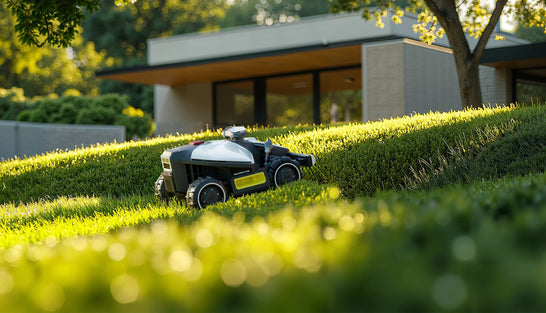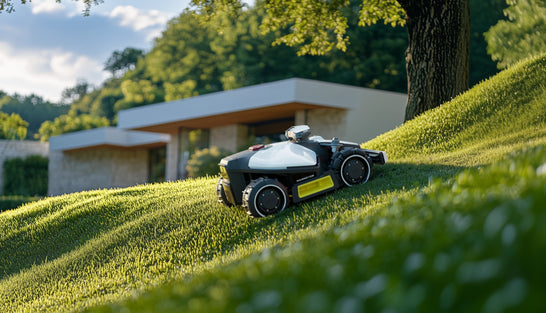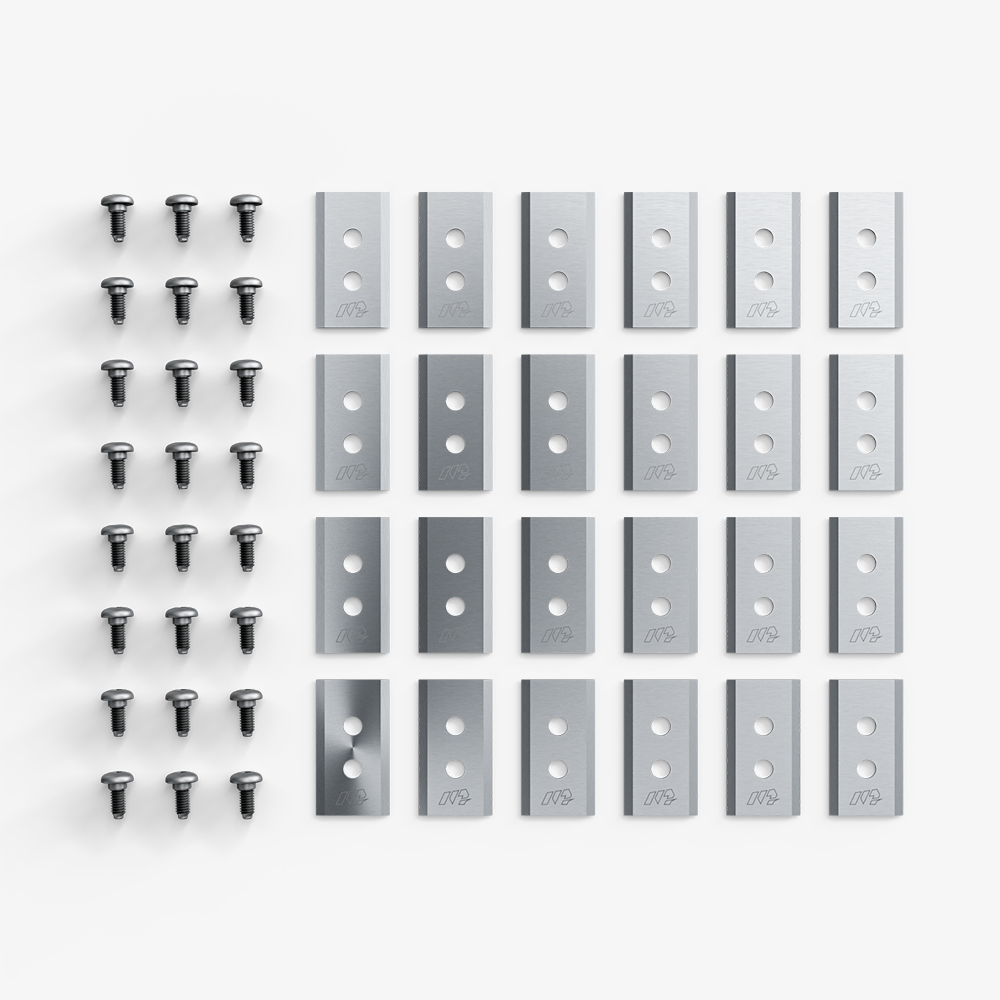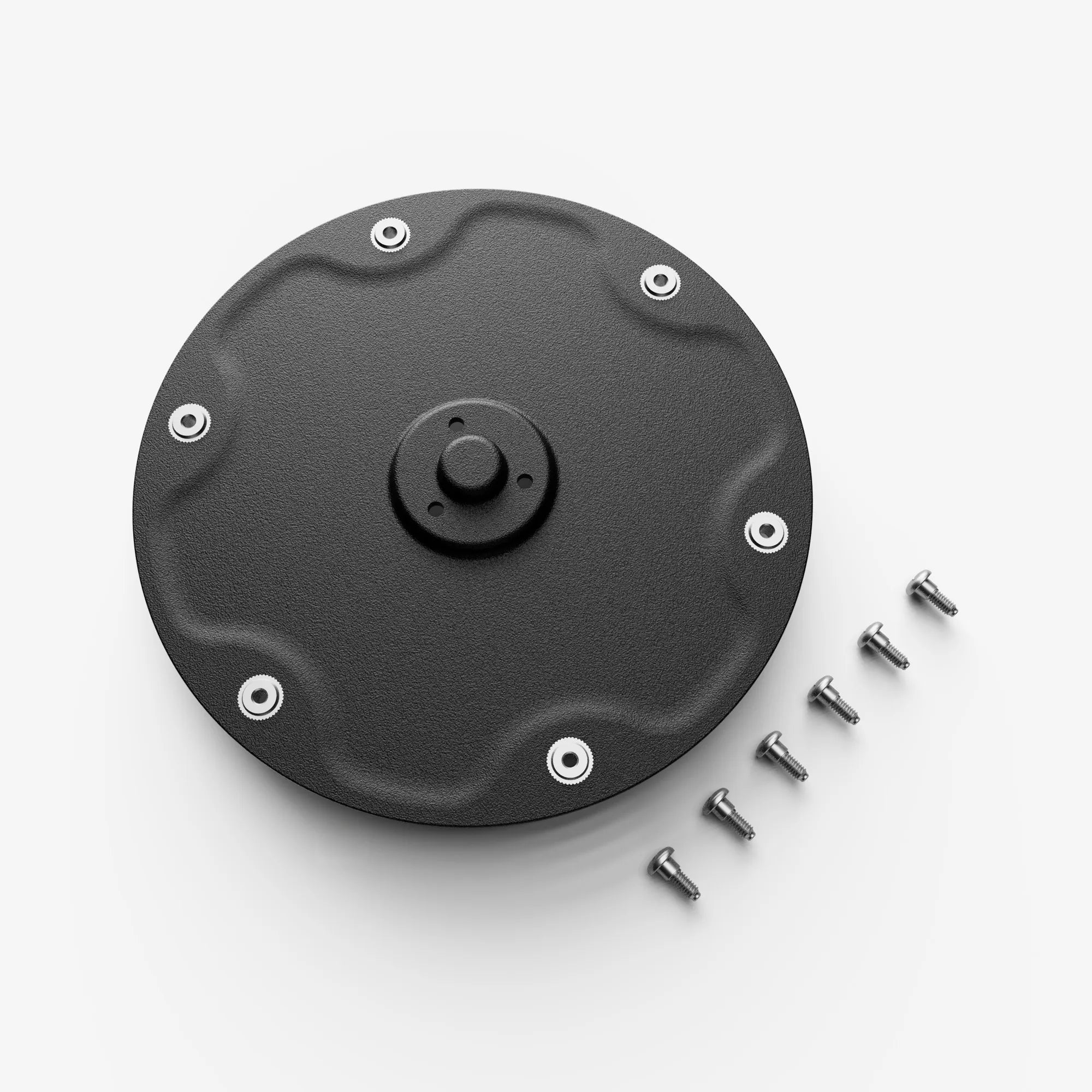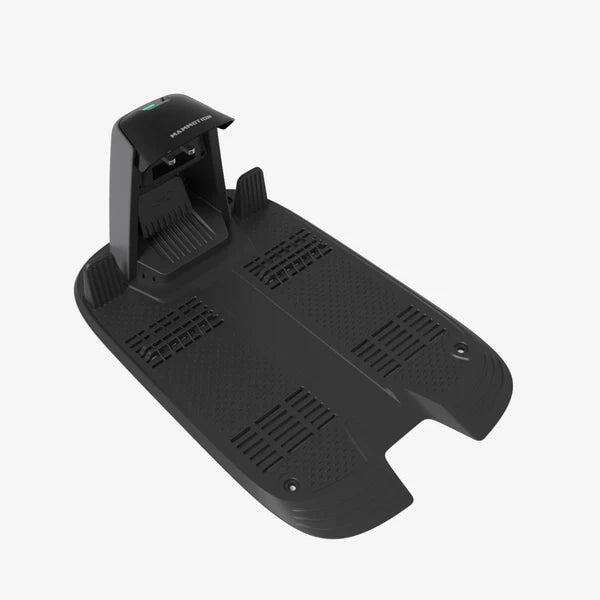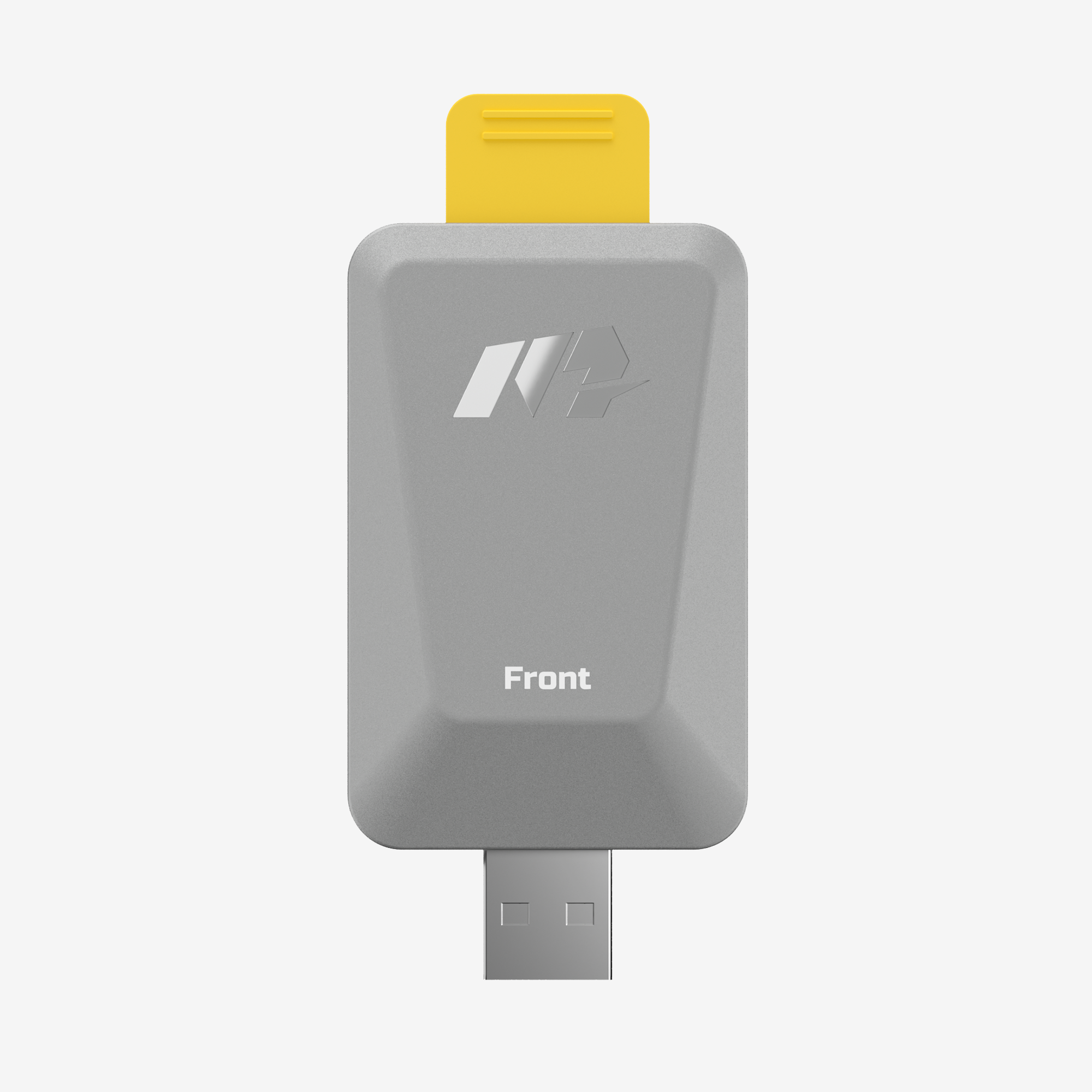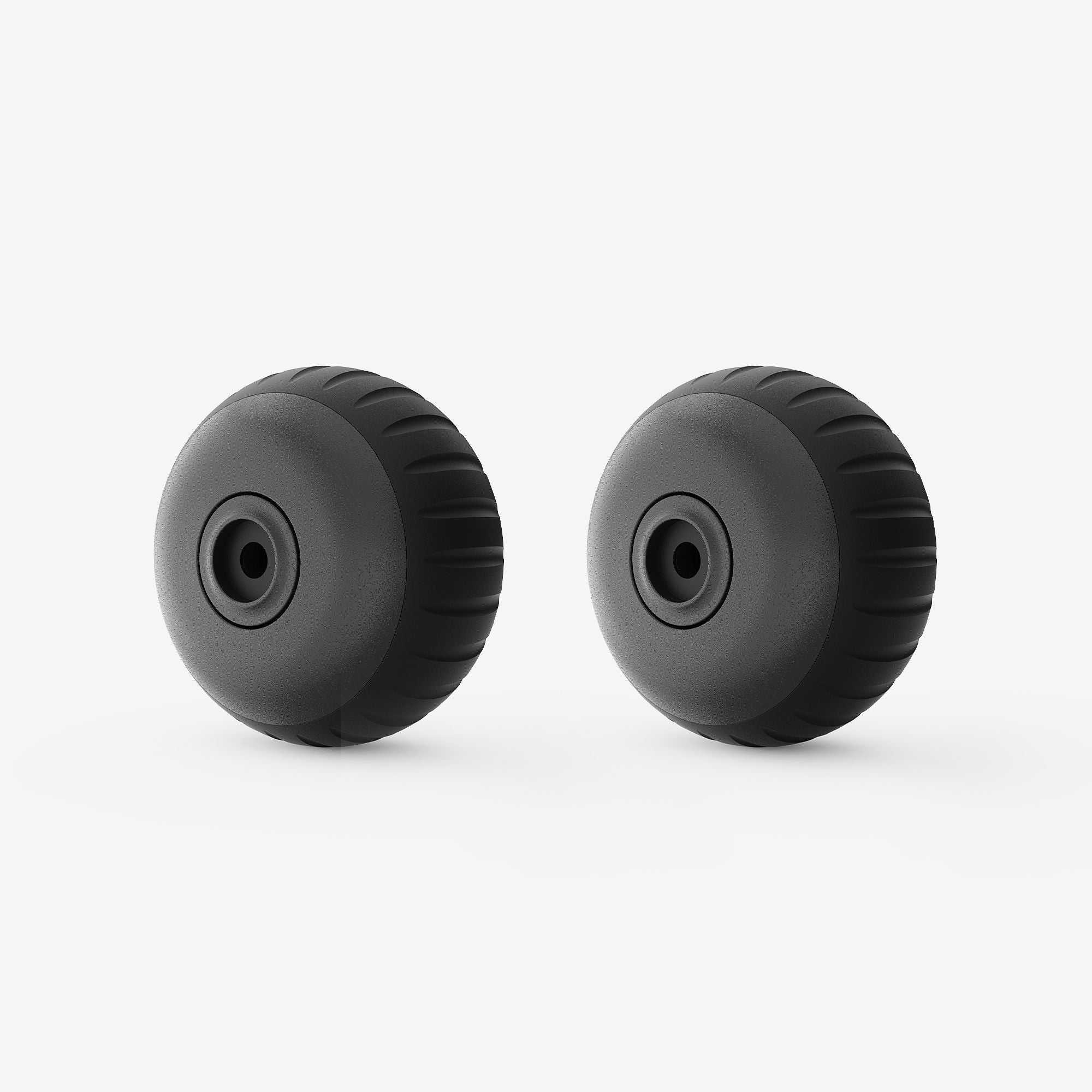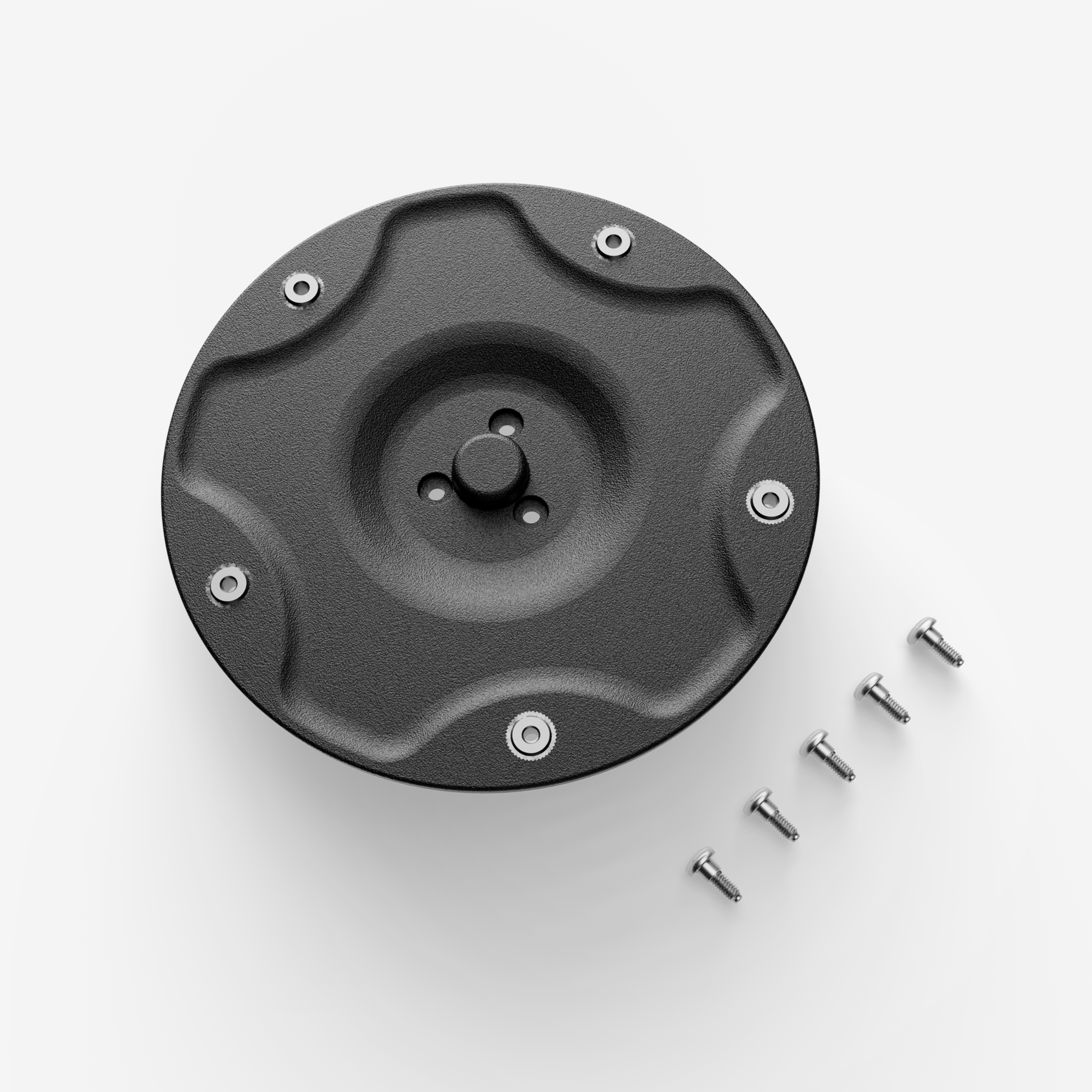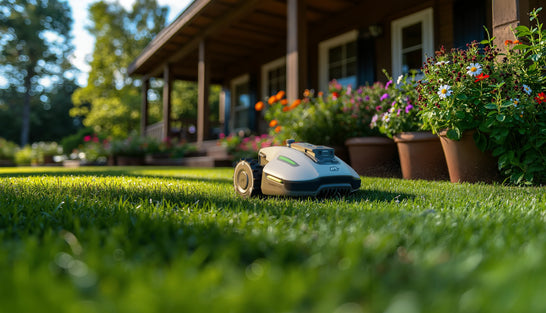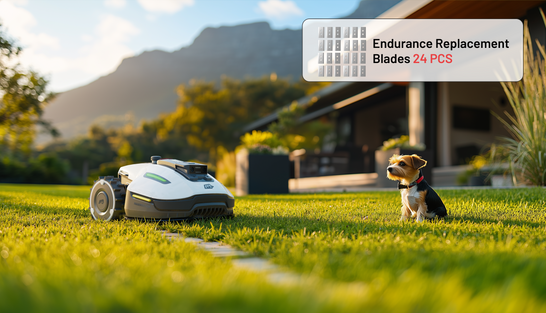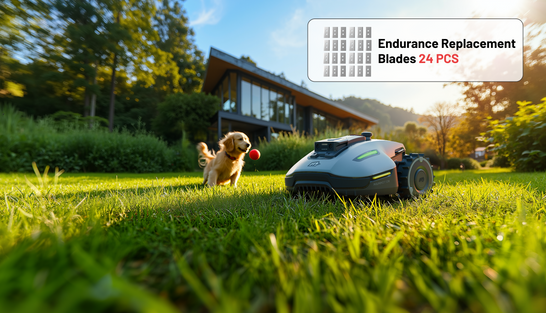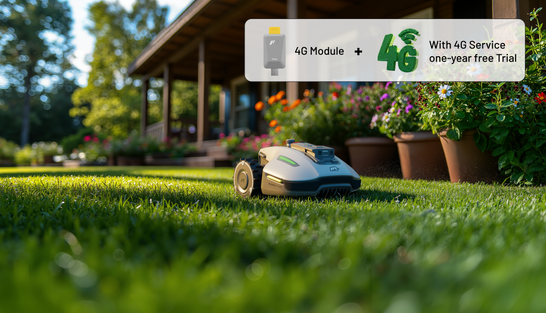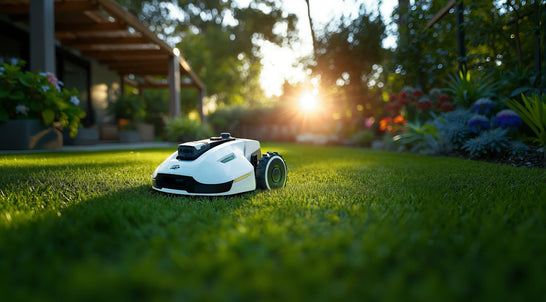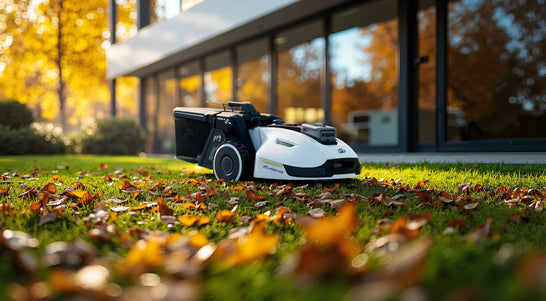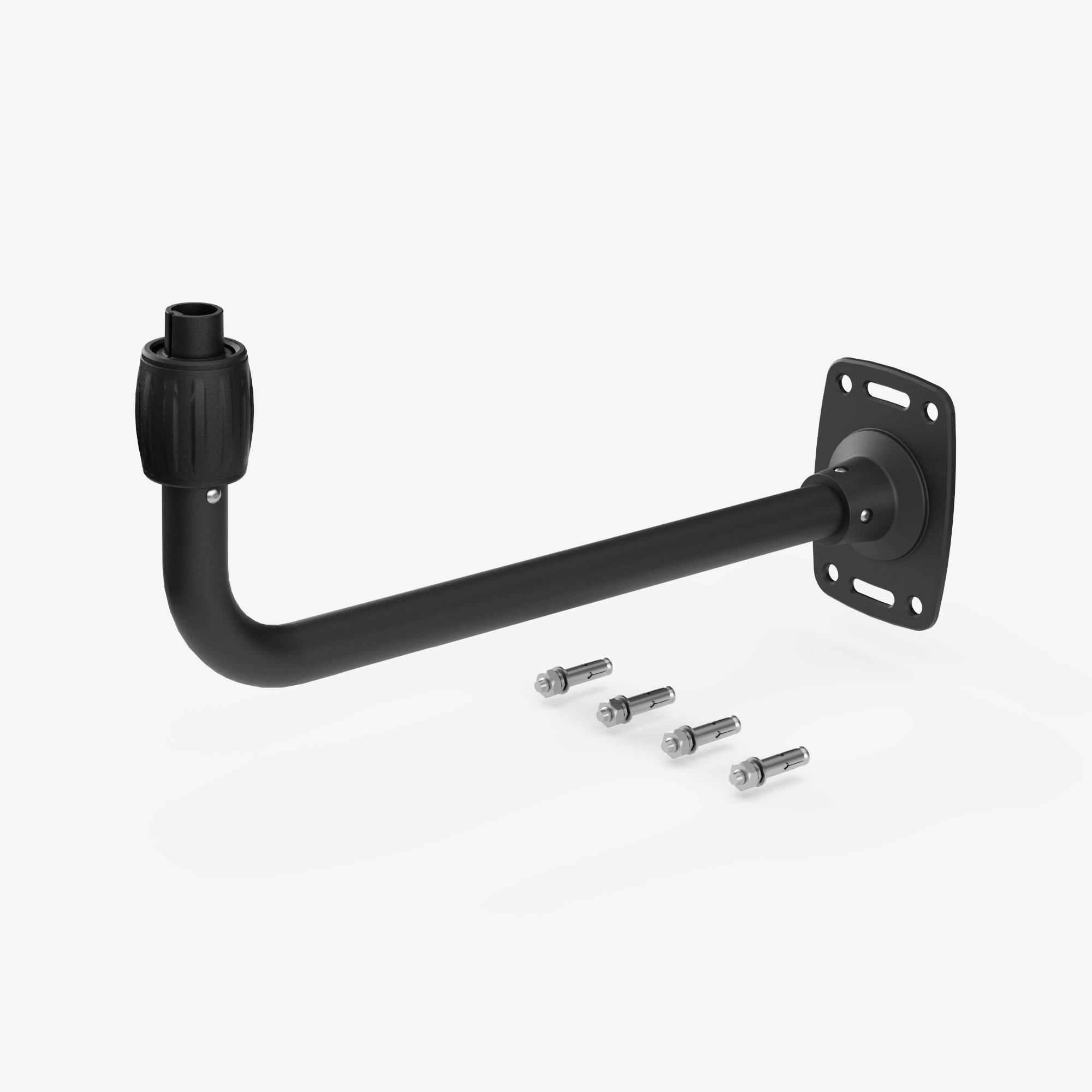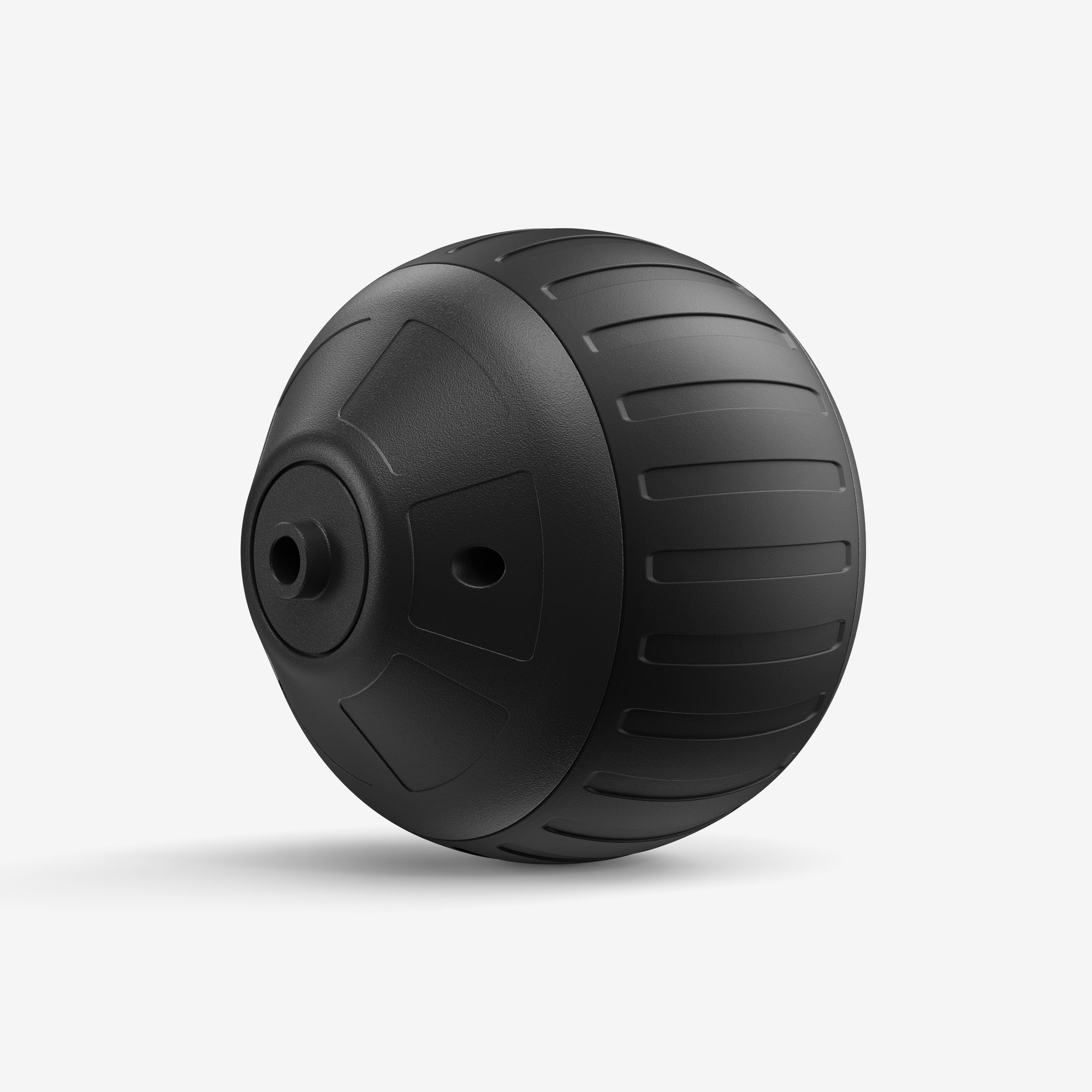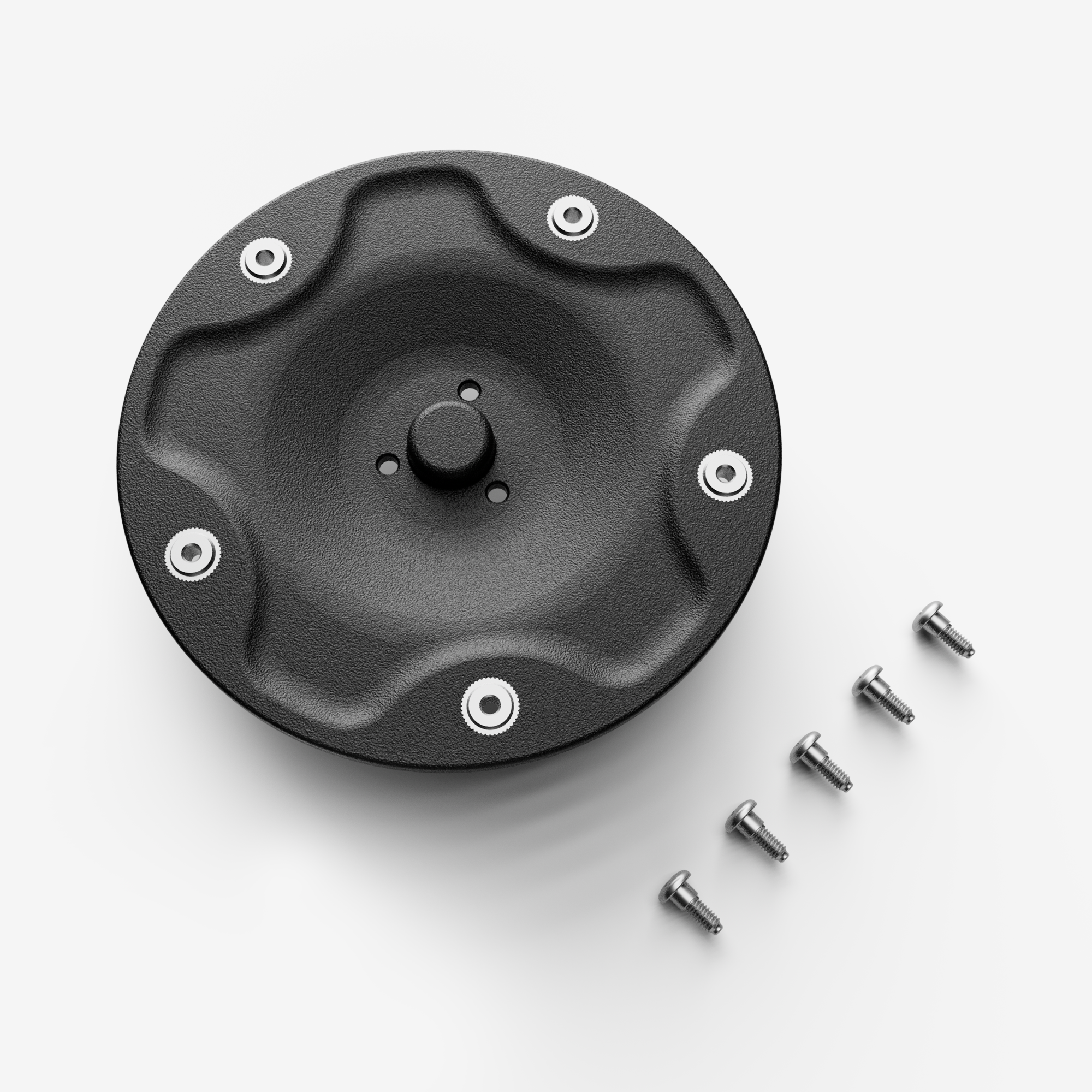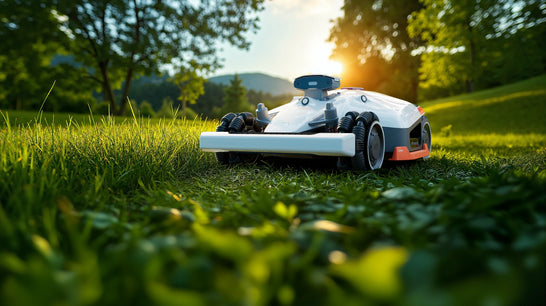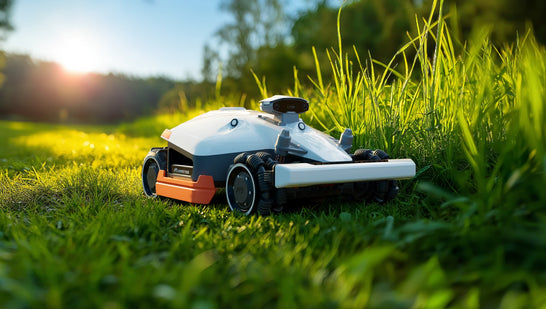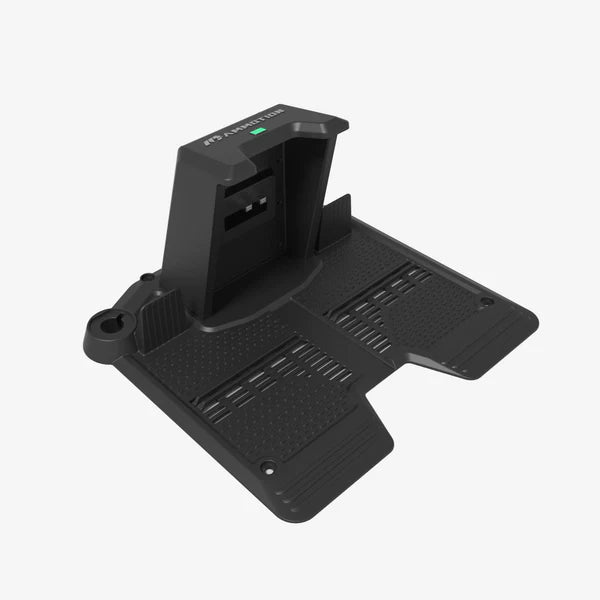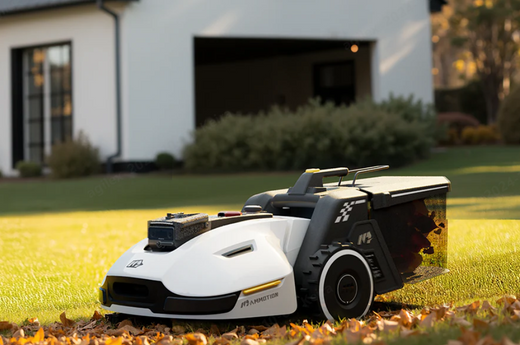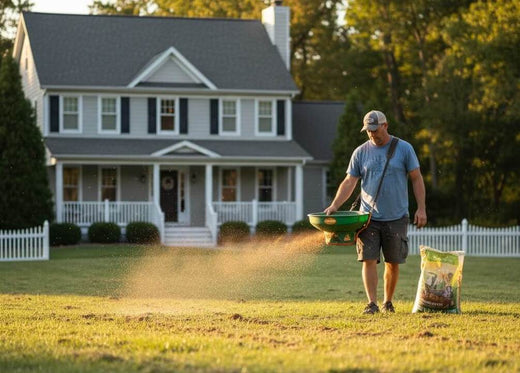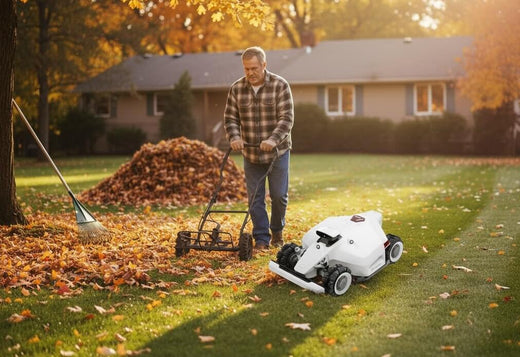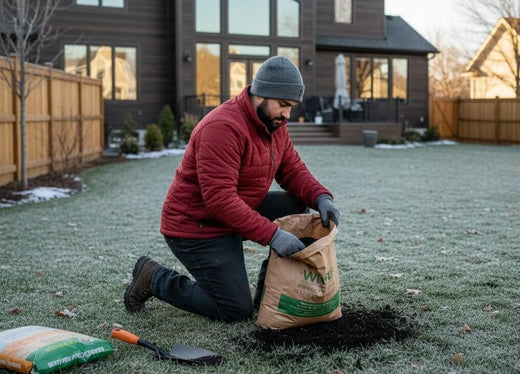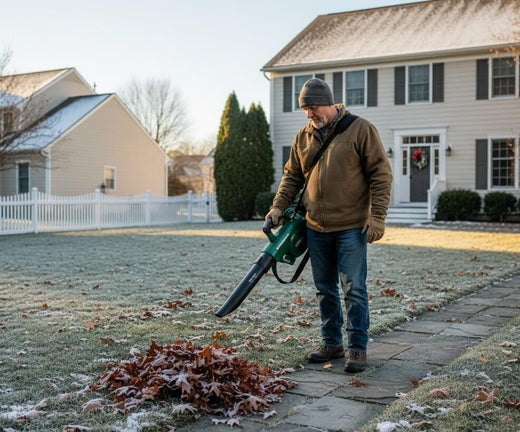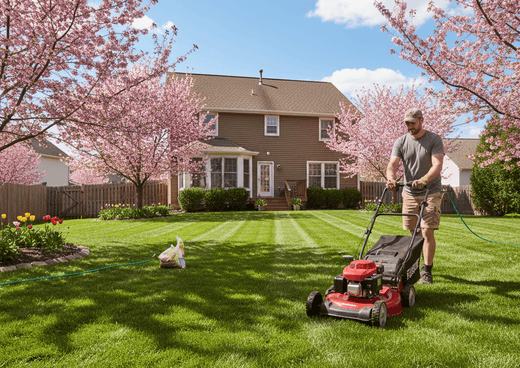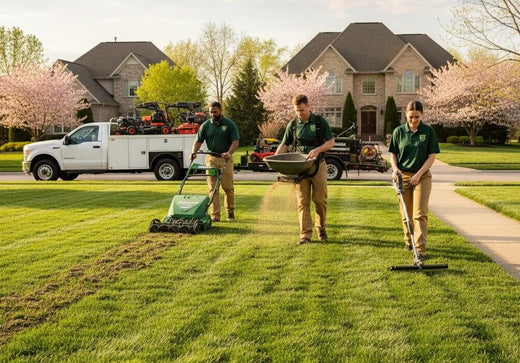While many homeowners focus more on fertilizing or aerating in the fall lawn care, mowing in the fall plays an equally important role in preparing your lawn for the challenges of winter. Proper mowing during this time doesn't just keep your lawn looking neat; it strengthens the grass, ensuring it can withstand cold temperatures and dormancy. What many lawn care guides don’t tell you is that fall mowing, when done correctly, can reduce pest problems and disease outbreaks that often arise in winter and early spring. We'll dive into how to mow your lawn strategically in fall and at the ideal height to ensure lush, safe through the winter, and healthy grass when spring arrives.
Why Fall Mowing is Essential for Lawn Health?
Many homeowners misunderstand or neglect fall mowing, but it’s a crucial part of maintaining a healthy lawn year-round. As temperatures cool and the days shorten, grass begins to prepare for winter dormancy. Proper mowing during this transitional period can have long-lasting effects on the overall health of your lawn.
Preparing for Winter Dormancy
Mowing at the right height helps the grass store energy in its roots, which is important for its survival through the cold months. During fall, the grass is still growing, so cutting it too short will reduce its ability to store the energy it needs to endure winter. On the flip side, leaving it too long will invite mold and pests as the grass lies under layers of fallen leaves or snow. So finding the right balance through mowing sets the stage for a vibrant lawn next spring.
Strengthening Grass Roots
Fall is when grass naturally strengthens its root system, and mowing can either help or hinder this process. When you mow at the recommended height—typically 2.5 to 3 inches—the grass will focus its energy on root development instead of excessive top growth. Deep roots are vital for accessing nutrients and moisture during the winter and for rapid recovery when spring arrives. A properly mowed lawn in fall will have a stronger, more resilient root system capable of withstanding harsh winter conditions.
Preventing Diseases and Pests
One often overlooked benefit of fall mowing is its ability to reduce the risk of lawn diseases and pests. Too long Grass will trap moisture, particularly under piles of leaves or snow, leading to fungal infections like snow mold. And pests like rodents are also more likely to find refuge in tall, unkempt grass. By mowing your lawn to a proper height, you reduce moisture buildup and eliminate hiding spots for pests. Consistent mowing also helps break up fallen leaves, preventing them from matting down and suffocating the grass, which could invite disease.
Best Practices for Mowing a Lawn in the Fall
Mastering the skills of fall mowing can make a significant difference in how your lawn weathers the winter and thrives in the spring. While mowing seems straightforward, there are still several best practices specific to fall that many homeowners overlook. Learning and practicing these tips will keep your lawn healthy, strong, and ready for winter dormancy. So let’s explore these key practices.
Frequency of Fall Mowing
As temperatures drop and daylight hours decrease, grass growth will naturally slow. However, this doesn’t mean you should stop mowing your lawn. Of course, you should gradually reduce the frequency of mowing as fall progresses, but it’s important to continue until the grass stops growing completely. If your lawn is still actively growing, mow it every 7 to 10 days, adjusting timing as the growth rate slows. Grass in the fall often continues to grow well into October or November, depending on your region. Keeping up with regular mowing prevents the grass from getting too long, which can lead to a matted lawn prone to disease over the winter months.
Ideal Mowing Height for Fall
For most lawns, the ideal mowing height in the fall is between 2.5 to 3 inches. This height ensures the grass is short enough to avoid disease and pest issues, yet long enough to protect the roots from frost and freezing temperatures. Mowing too short can weaken the grass, making it more susceptible to damage from cold weather. Taller grass, on the other hand, may not dry out properly, creating an environment where mold and mildew can thrive, especially under piles of leaves or snow. Adjusting your mower to this height strikes the perfect balance between protection and prevention.
Timing: When to Stop Mowing for the Season
A common question for many homeowners is knowing when to stop mowing in the fall. The answer largely depends on the weather and the grass growth in your area. Generally, you should continue mowing until your grass stops growing, which typically happens after the first frost or when daytime temperatures consistently fall below 50°F. It’s important not to stop mowing too early—leaving the grass too long can cause matting, which invites pests and disease during winter. If the grass is still growing, even at a slower rate, continue mowing to keep it at the recommended height. Your last mow of the season should leave the grass at around 2 - 2.5 inches to prepare it for dormancy.
How to Mow Your Lawn for Best Fall Performance?
Mowing your lawn for the best fall performance requires a thoughtful approach that considers the specific needs of the grass during this transition period. How you mow in the fall can directly affect how your lawn survives the winter and flourishes in the spring. Here are some tips on how to achieve the best results.
Gradually Lower the Mowing Height
Early in this season, keep the grass around 3 - 3.5 inches high to allow it to photosynthesize effectively while it’s still growing. Photosynthesis is critical during fall, as it allows grass to store nutrients for winter. Keeping the grass 2.5 - 3 inches in the middle season. Then, in the final weeks of mowing, reduce the height slightly—down to about 2 - 2.5 inches—before your last mow. This lower height reduces the risk of snow mold by minimizing the amount of grass exposed to moisture, but still leaves enough blade length to protect the roots from freezing temperatures.
Mow in Dry Conditions If Possible
Mowing your lawn when is wet can cause significant damage, as the blades of grass become vulnerable to tearing and the soil is more likely to become compacted. Compaction soil will make your grass harder to access nutrients and water, leading to poor root development and unhealthy grass. To avoid this, try to mow during the driest part of the day, usually late morning or early afternoon.
Use the Right Mower Settings and Blades
A sharp mower blade is essential for a clean, healthy cut, especially in the fall when the grass is more prone to stress. Dull blades will tear the grass, leaving ragged edges that are more susceptible to disease and dehydration. Additionally, consider switching your mower settings to a mulching mode. Mulching blades finely chop grass clippings and leaves, turning them into nutrient-rich mulch that can feed your lawn naturally.
Clear Leaves Regularly
A lawn covered with fallen leaves can suffocate the grass and block it from receiving sunlight, moisture, and air. Instead of leaving the leaves to accumulate, make leaf removal part of your mowing routine in the fall. You can either rake them before mowing or use your mower to mulch the leaves into finer particles, which can be left on the lawn to decompose.
Pay Attention to the Edges and Hard-to-Reach Areas
The edges of your lawn, around flower beds, pathways, and fences, often get overlooked during fall mowing, but these areas are just as important as the main sections of your lawn. Ensure that you trim the edges carefully, maintaining the same height as the rest of your lawn to promote even growth. Overgrown edges can invite pests and diseases, as these areas tend to retain moisture longer. Using a string trimmer or edge cutter can help you reach tight spots, ensuring that no part of your lawn is left neglected.
Plan for Your Final Mow
Many homeowners stop mowing too early, leaving the grass too long to handle the moisture from fall rains and early snowfalls. Plan to mow until the grass stops growing, usually after the first hard frost. Your final mow should leave the grass at about 2 - 2.5 inches high—short enough to avoid matting and mold but long enough to insulate the roots during winter.
Common Fall Lawn Mowing Mistakes to Avoid
Proper fall lawn mowing is important for your lawn to have a healthy condition during winter and a vibrant return in spring. Here are three common mowing mistakes and how to avoid them:
Cutting the Grass Too Short
Mowing your grass too short in the fall can severely weaken it. Grass blades play a critical role in photosynthesis, the process through which the plant produces food. When you cut the grass too short, you reduce the plant’s ability to store energy for winter, leaving it undernourished. This weakens the root system, making the grass more susceptible to winter stress, cold temperatures, and diseases like snow mold. Shorter grass is also less able to protect the soil from frost, leading to root damage.
Ignoring Grass Growth Patterns
Fall grass growth is unpredictable, slowing down but not entirely stopping until after the first frost. Many homeowners overlook this and fail to adjust their mowing practices accordingly, which will cause uneven cuts or over-mowing certain areas. As fall progresses and temperatures cool, grass naturally grows more slowly, so it’s important to raise the mower height slightly, it helps avoid scalp damage, allows for better nutrient retention, and ensures the grass remains uniform and strong as it enters winter dormancy.
Neglecting Lawn Care After the Last Mow
After the final mow, it’s essential to winterize your lawn by applying fall treatments such as slow-release fertilizers. These treatments provide essential nutrients that support root development and disease resistance during the cold months. Additionally, clean and maintain your mower after the last use. Grass clippings and debris left in the mower can cause rust and damage. Properly storing and servicing your equipment ensures it will be in good condition for spring.
Fall Lawn Care Tips Beyond Mowing
Fall is an ideal time to focus on lawn care activities that go beyond just mowing. Incorporating additional steps such as fertilizing, aeration, overseeding, and adjusting watering practices can greatly improve your lawn’s health and prepare it for the winter months. Here’s how to give your lawn the best possible care before winter.
Fertilizing in the Fall
Fertilizing your lawn in the fall is one of the most crucial steps for ensuring it has the nutrients needed to survive the winter and thrive in spring. Cooler temperatures slow down grass growth above ground, but below the surface, the roots are still active. A slow-release fertilizer with a higher potassium content is ideal during this time. Potassium helps strengthen roots, making them more resilient to frost and winter stress.
Aeration and Overseeding
Fall is the perfect time to aerate your lawn, especially if it has become compacted over the summer from foot traffic or heavy use. Aeration involves punching small holes in the soil, which allows water, oxygen, and nutrients to penetrate more deeply into the root zone. This process also alleviates soil compaction and promotes better drainage, which is essential as fall rains increase.
Overseeding after aeration is another effective way to improve lawn density and repair bare or thinning spots. The holes created by aeration give seeds better contact with the soil, improving germination rates. Overseeding with a high-quality cool-season grass mix will fill in weak areas and prepare your lawn for a robust start in the spring. The cooler temperatures and increased moisture in fall create the perfect conditions for new seed growth without the risk of heat stress or weed competition.
Watering Guidelines for Fall
While fall brings cooler temperatures and more frequent rain, it’s still important to ensure your lawn remains hydrated. However, you’ll want to adjust your watering practices to match the season’s conditions. During early fall, continue watering your lawn as needed, aiming for about 1 to 1.5 inches of water per week. This helps keep the grass hydrated and encourages root growth before the ground begins to freeze.
FAQs About Mow a Lawn in the Fall
1. How should I cut my lawn in the fall?
In the fall, you should aim to maintain a cutting height of about 2.5 to 3 inches for your grass. This height helps the grass stay healthy by allowing it to photosynthesize effectively and build energy reserves for winter.
2. Should grass be cut shorter or longer in the fall?
Keeping your lawn at a height of 2.5 to 3 inches provides insulation for the roots and protects them from winter stress.
3. How to store a lawn mower in the garage?
To store your lawn mower properly in the garage, first clean it by removing grass clippings and debris. Drain the fuel tank or add a fuel stabilizer to prevent stale fuel from causing engine problems. Change the oil and replace the air filter if necessary. Finally, sharpen the blades and store the mower in a dry, sheltered spot to protect it from moisture and rust.
4. Is it better to cut grass before or after rain?
It is generally better to mow grass when it is dry. Cutting wet grass can lead to uneven cuts and clumping, which may smother the grass underneath. Additionally, wet grass blades are more prone to tearing, which can damage the plant.
5. How do I mow my lawn in October?
When mowing your lawn in October, follow the same principles as in the fall: keep the grass at a height of 2.5 to 3 inches. Pay attention to the weather, as October can be unpredictable. Mow during the warmer, drier parts of the day for the best results.
Conclusion
As a homeowner committed to maintaining a beautiful lawn, implementing these fall care strategies will pay dividends in the coming months. By understanding the importance of proper mowing techniques and avoiding common mistakes, you can set a solid foundation for your grass’s health. Remember you're not just mowing—you're nurturing a resilient, vibrant landscape that enhances your home and lifestyle.

